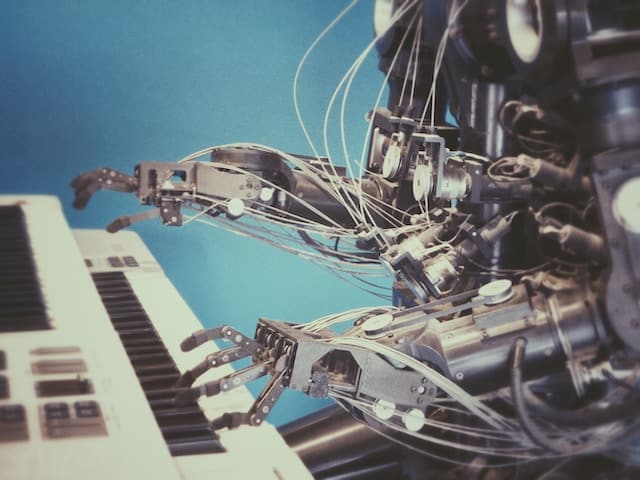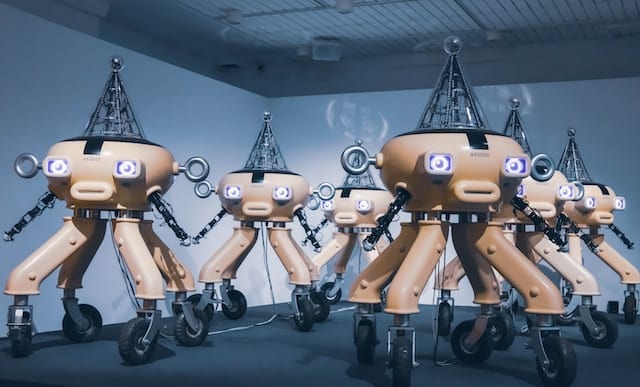Introduction to AI – A Simple Guide
In today’s tech-driven world, you may often come across the term ‘Artificial Intelligence’, or AI as it’s commonly known. It seems to be everywhere – in our phones, our cars, our homes, even in our schools. But what is AI really? This introduction to AI will unravel the mystery of AI for you in simple terms.
Table of Contents
What is AI?
Artificial Intelligence is a broad field of computer science that’s all about creating machines that can think – or at least, that can appear to think – like humans. But don’t worry, we’re not talking about robots taking over the world. AI is about machines being able to understand, learn, and act based on the information they receive.
In simpler terms, AI is a computer system’s ability to mimic human intelligence and behavior. It’s like teaching a computer to be more like a human, to understand our language, learn from experiences, and make decisions.
Types of AI
There are generally two types of AI: Narrow AI and General AI.
Narrow AI
Narrow AI, also known as Weak AI, is the type of AI we interact with in our daily lives. It’s called ‘narrow’ because it’s designed to perform a specific task, like recommending a song on Spotify or answering a question on Siri. Narrow AI can only do what it’s programmed to do – and it does these tasks incredibly well – but it can’t understand or learn anything outside of its specific function.
General AI
General AI, also known as Strong AI, is the kind of AI that we see in science fiction movies – an AI that can understand, learn, and do any intellectual task that a human being can. It’s a type of AI that has a consciousness, can make decisions, and even experience emotions. However, General AI still remains largely in the realm of theory and fiction, as we’re quite a long way off from creating machines with this level of intelligence.
AI Applications in Daily Life
Now you might be wondering, where do we use AI in our daily lives? The answer is, in more places than you might think. When you ask Siri to set an alarm for you, when Netflix recommends a movie you might like, when your email filters out spam – these are all examples of AI at work.
AI has revolutionized various industries, from healthcare to transportation, from entertainment to education. It’s used to predict diseases, drive autonomous cars, recommend songs and movies, personalize learning, and so much more. The aim is to make our lives more efficient and convenient.
How Does AI Learn?
AI learns through a process called Machine Learning, which is like teaching machines to learn from experiences. It involves feeding data to the AI system and allowing it to learn and make predictions or decisions based on that data. It’s similar to how a child learns to recognize a dog by looking at several pictures of dogs and understanding their common features.
There’s also something called Deep Learning, which is a subset of Machine Learning. Deep Learning involves artificial neural networks, which are designed to mimic the human brain, allowing the machine to learn from vast amounts of data. While the human brain has billions of neurons, the artificial neural network has hundreds or thousands, which are used to make complex decisions.
Artificial Intelligence is not just a buzzword or a concept of the future. It’s a significant part of our present and is continually shaping our lives and the world around us. It’s a fascinating field that combines computer science, data, and human-like intelligence to solve problems and make our lives better. So next time when you talk to Siri, or when Netflix suggests a movie that you end up loving, remember that there’s a whole lot of AI magic happening behind the scenes!








This article provides a fantastic introduction to the world of AI. I found it to be comprehensive, yet easy to understand, breaking down complex concepts into simple terms. The author did a great job explaining the different types of AI, such as narrow and general AI, and their applications in various fields. It was also interesting to learn about the history of AI and its potential impact on society. The inclusion of real-life examples helped me grasp the practical applications of AI in our everyday lives. Overall, this article is a must-read for anyone looking to gain a basic understanding of AI and its significance in today’s world. Whether you’re a beginner or already familiar with the topic, this guide offers valuable insights that will leave you intrigued and eager to delve deeper into the world of AI.